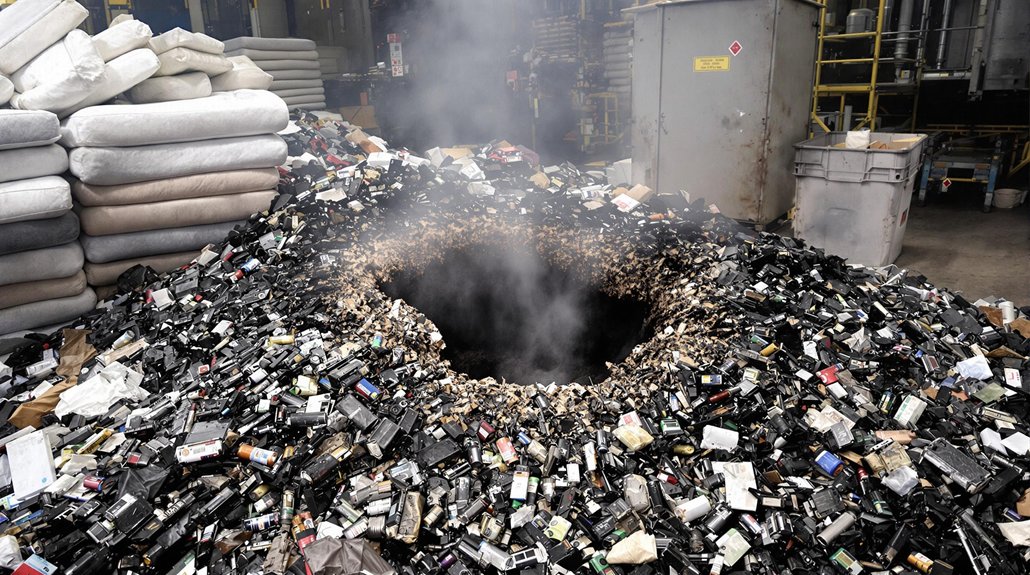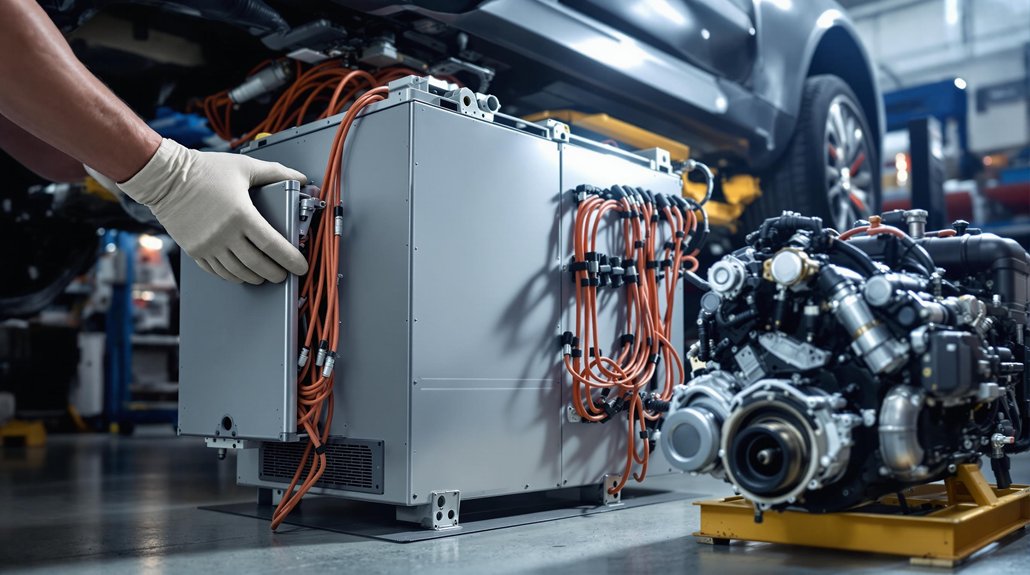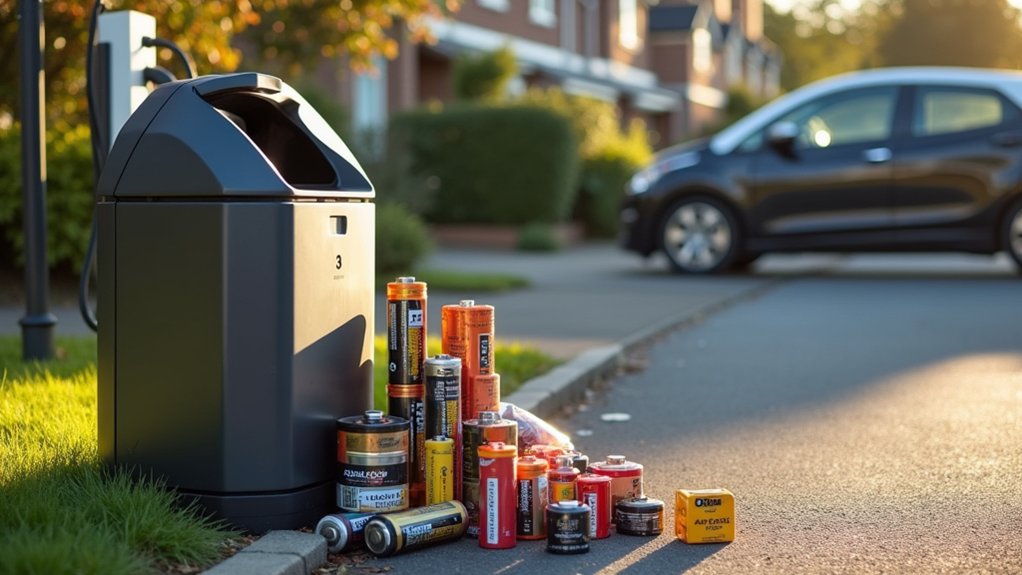A concerning fire incident at Rugby’s Hunter’s Lane Recycling Centre has highlighted the serious dangers posed by improperly disposed lithium-ion batteries. The incident, occurring on Saturday, 19 July 2025, began when staff detected smoke during the waste compaction process, quickly identifying the source as lithium-ion batteries concealed within black bags of general waste.
The batteries, which had been incorrectly disposed of alongside household refuse, ignited upon compression—a predictable outcome given their volatile chemistry when damaged. Fortunately, the batteries had become wedged between damp mattresses, which temporarily subdued the flames and limited damage to a small burn hole. This fortuitous positioning prevented what could have been a catastrophic facility-wide conflagration.
Staff response was exemplary, demonstrating protocol efficiency that certainly saved the facility. Upon smoke detection, they immediately triggered evacuation procedures, clearing both personnel and visitors, including those at the adjacent AGE UK Reuse Shop. The burning materials were rapidly isolated and transferred to a metal containment bin for safe cooling.
The technical failure point is clear: lithium-ion cells contain highly reactive materials that, when punctured or compressed, create exothermic reactions capable of generating temperatures exceeding 500°C. These batteries, increasingly common in household electronics, require specialized disposal channels. The situation mirrors concerns in the EV industry, where battery swapping stations offer safer alternatives for managing depleted power cells.
This incident represents a troubling pattern. Multiple fires at regional recycling facilities have been traced to identical causes—batteries and small electronics concealed within general waste streams. The persistence of this hazard suggests inadequate public awareness of proper disposal requirements.
Warwickshire Recycles has intensified public education efforts, emphasizing the dedicated collection infrastructure for batteries at recycling centers. Proper segregation of hazardous materials is non-negotiable for facility safety. Councillor Darren Cheshire has stressed that items like vapes and electrical equipment must be disposed of through designated disposal facilities rather than regular waste streams.
The Rugby incident serves as a timely reminder that recycling safety depends on conscientious disposal practices. Had staff intervention been delayed by even minutes, the outcome might have involved substantial property damage, service disruption, and potential injuries. Similar to the March 2025 incident where a fire started from a skip containing small electricals, this event reinforces that compliance with hazardous waste protocols isn’t merely regulatory adherence—it’s essential protection for community infrastructure and personnel.









